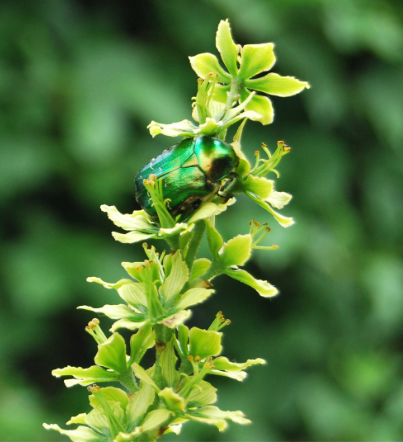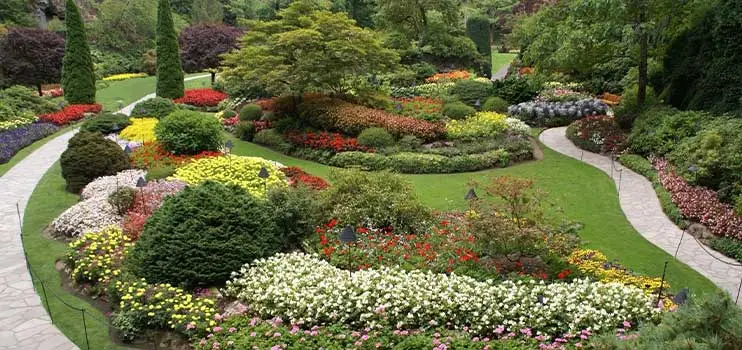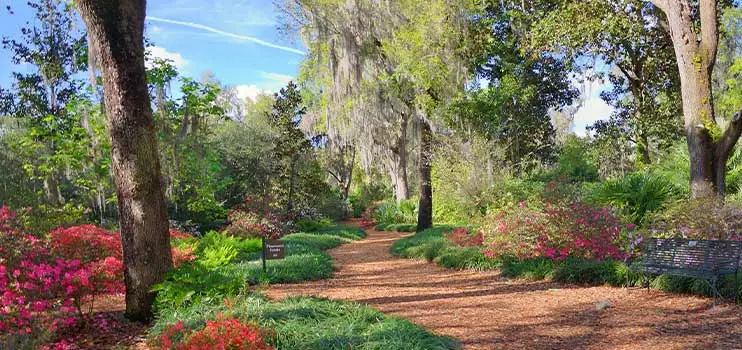While summer is a popular vacation time for humans, insects are hard at work. Summer garden pests are most active during this time, and this is when pest management goes into full swing.
Whether you are growing a culinary herb garden, or an Eco-friendly landscape filled with flowers and shrubs, below are a few of the common pests that can prevent your outdoor spaces from flourishing:
Two-Spotted Spider Mite

The eight‑legged female mites are yellow to dark green with two to four dark dorsal spots. At 1/60 of an inch, they are almost microscopic. Males are smaller with more pointed abdomens.
How can they affect my plants? This mite is a problem for outdoor roses, miniature, and cut flowers. They become particularly troublesome during midsummer dry spells and on plants growing under adverse conditions. Damage appears as pale flecks on leaves, which in severe cases turns leaves yellow, brown and in turn fall off.
Oystershell Scale

These crawlers are shaped like an elongated oyster shell and hatch in early July. Their hosts include apple, lilac, ash, willow, popular maple, and dogwood.
How can they affect my plants? Once they are settled on permanent locations along twigs and stems, this scale feeds on the fluids of cells underlying the bark, often killing the cells. During heavy outbreaks, they can weaken plants, making them more susceptible to pathogens and possible plant death.
Emerald Ash Borer

The Emerald Ash Borer (EAB) is so named for its emerald green color. This pest is an invasive, wood-boring beetle that feeds on and eventually kills all species of Ash.
How can they affect my plants? EAB creates a thinning or dying of ash tree crowns, splitting bark, tunneling under the bark, D-shaped exit holes and woodpecker activity. Small trees can die as soon as one to two years after infestation. Larger infested trees can survive for three to four years.
Boxwood Psyllid

Adults are light green insects that are about 3 mm long. Both nymphs and adults have piercing-sucking mouthparts. These adult pests are now visible in the NYC area according to Don Gabel of the New York Botanical Garden and. Amy Albam from Westchester CCE said the nymphs were forming wings in her area.
How can they affect my plants? Feeding damage is very noticeable due to leaf cupping that young nymphs produce on plants. Occasionally, young twig growth is affected by this species. These leaves are weakened and will usually fall off after about one year. Terminal growth will be affected for about two years.
Rhododendron Borer

This pest is a clearwing moth that somewhat resembles a wasp. The borer is pale yellow with a dark head and about ½ inch long.
How can they affect my plants? They mainly attack rhododendrons along with azaleas. Borer’s chew holes in the inner bark of plants and forms long tunnels in the branches. By late fall, it enters the sapwood where it survives the winter. They infest main stems and branches as well. Leaves on infested branches are often off-color and wilted. Damage and activity in the northeast was apparent in June.
Black Vine Weevil

The adult black vine weevil is black with subtle white flecking, oblong, 3/8 of an inch long, and has a short snout. All are female and unable to fly.
How can they affect my plants? These pests attack over 100 different kinds of ornamental plants including rhododendrons, azaleas, yews and hemlocks. When weevils enter your house, greenhouse or indoor gardens, they can be damaging to begonias, ferns and other popular potted plants.
Taxus Mealybug

The Taxus Mealybug is a white, fuzzy-looking insect that sucks the sap from needles and stems. The excreted honeydew makes a sticky coating on the stems and needles. Black sooty mold will grow on the honeydew.
How can they affect my plants? Infested plants may have sparse foliage, depending on the severity of the infestation. Heavy deposits of honeydew will cause much sooty mold that blocks sunlight and interferes with photosynthesis. The insects are usually found where branches join.
How Can I Protect My Landscape!?
Horticultural oil treatments for preventative treatment, along with continuous monitoring can help keep protect your landscape. Most of the time, identifying an infestation requires a trained eye. Our certified arborists specialize in preventative care and continuous monitoring, utilizing the most environmentally sensitive and effective products. They will prescribe a treatment plan that will keep infestations at bay all summer long.
To prevent summer pest damage or for a summer landscape check-up, call us at 914-725-0441 or email info@emeraldtreecare.com










